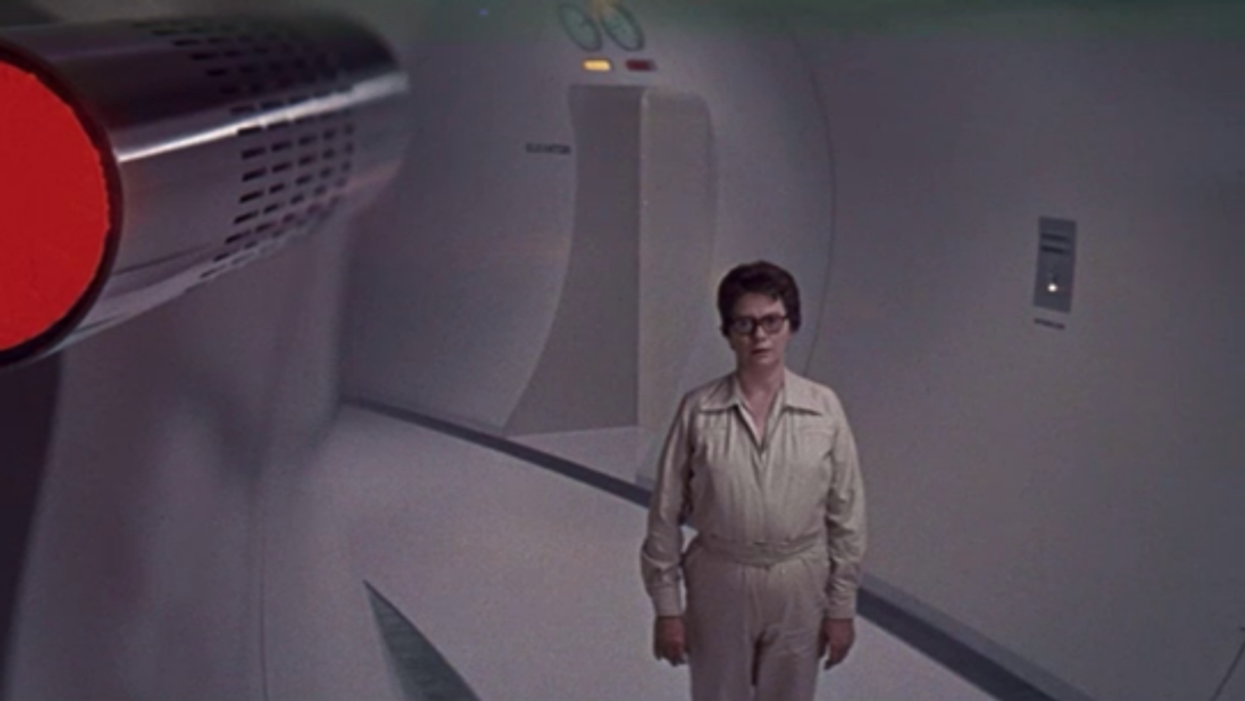Watch: 71 Uses of the Split Diopter Shot—in One Movie
Behold the beauty of the split diopter.

Though its name may not slide off the tongue, the split diopter shot is one you've seen in many films (especially Brian De Palma's) and will see in many more. Simply put, the shot uses a mechanism which contains a convex lens; the curved nature of the lens puts objects in the foreground and background into equal focus.
There's a lot that can be done with this shot. Most benignly, you might show a moment of irony. For example, a policeman eats a donut, smiling a little as he does so. Across the street, seen as clearly as we see the policeman, three robbers dressed as American presidents leave a bank, carrying large bags, presumably full of money. The shot could also be used to build tension or induce panic. Who hasn't jumped with alarm during a horror film to see a hero, drenched with sweat, looking all around for the zombie he or she is certain is not far away, as that very zombie approaches the hero from behind?
Vashi Nedomansky's video essay on The Andromeda Strain is a highly detailed, focused study of the film's use of the split diopter shot to build and hold tension in a film.
Director Robert Wise and DP Richard H. Kline apparently used 206 such shots in this pioneer of the "a scary disease is here, and it's out of control" film; Nedomansky has chosen 71 of his favorites for this piece. Though the shots themselves may not necessarily exude tension or suspense, it's easy enough to see that the technique was being used to create an atmosphere. What better shot for a movie about an uncontrollable spreading physical malady than a shot which encourages such intense vigilance?
For more, here's how to use split diopters to achieve deep depth of field.










![Ethos, Pathos, Logos: 20 Effective Ways to Advertise [Infographic]](https://nofilmschool.com/media-library/ethos-pathos-logos-20-effective-ways-to-advertise-infographic.jpg?id=34064614&width=600&height=600&quality=90&coordinates=560%2C0%2C0%2C0)

